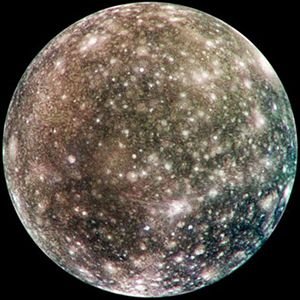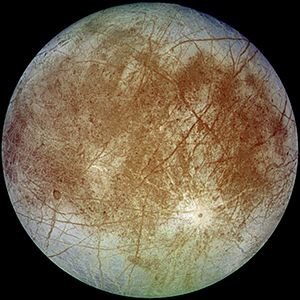We learnt from our basic science and biology classes that Jupiter is the biggest planet among all 9 planets that exist in our solar system. Recently, Pluto has been delisted from the planet bunch in our system as the International Astronomical Unit (IAU), and Pluto is now known as a dwarf planet. A dwarf planet as defined by Wikipedia
A dwarf planet is a planetary-mass object that is neither a planet nor a natural satellite. That is, it is in direct orbit of a star, and is massive enough for its gravity to compress it into a hydrostatically equilibrious shape (usually a spheroid), but has not cleared the neighbourhood of other material around its orbit. - Wikipedia.
So, among the remaining planets of our solar system, Jupiter is by far the biggest, and naturally, interstellar bodies, the smaller bodies, orbit the larger ones this as a result of several factors, one of which gravity. In this post we will look at the moons that orbit Jupiter, due to its massive nature, it exerts a massive magnetic field has a lot of moons orbiting around it. But we are going to focus on just 4 out of the 69 moons that have been confirmed to orbit Jupiter.
Galilean Moons
They are simply known as the top 4 biggest moons that orbit the planet, and they are Callisto, Io, Europa and Ganymede. They were all the Astronomer of ancient times Galileo Galilei, I believe that’s why the moons were named after him. The names of the four satellites are named after the mistresses/lovers of the Greek god Zeus. We will be briefly looking at each and every one of them shortly. Today, we will be looking at two of the moons, and in the next post, I will discuss the other 2 moons of Jupiter.
We will look at the moons that have the possibility of having life on them
Callisto
Known as the second largest moon among all the moons of Jupiter, and also as the 3rd brightest of them, all Callisto got its name from one of Zeus’s lovers. The planet is composed with a fairly balanced of rock and ice. This heavily cratered satellite, in fact, it is the most cratered solar object in our solar system. It is located outside orbital resonance that affects the other Galilean moon, and the planet is known to possess a very thin atmosphere.
The chemical composition of the atmosphere mainly consists of molecular oxygen, as well as carbon dioxide. Recent studies suggests that there might be a huge ocean beneath its surface, beneath all the ice. And if this is said to be true, then the planet might have the ability to support life, and might even have life existing beings on the moon.
Europa
This moon is the second moon in our solar system that is being watched for the possibility of life forms already sprouting out there, recent studies discovered that the planet had plumes, this plumes happen because although Europa is a giant cue ball that is why it highly reflective, and not only does not reflect light, it is made up of rocky core, as well as sub-surface water. Europa is the second moon closest to the Sun and is also known as the second smallest planet. Also named after one of Zeus’s lovers.
Astrobiologist find this moon’s activities very fascinating and a mission is already underway that send an unmanned spacecraft in order to collect samples to be analysed for the water content found on the Europa




Bulan double bang @yandot ya.
Trible haha :D
What the reason to be delisted pluto
You need to research them :D
Waw luar biasa...
Thanks
I love Galileo Galilei
A Smart Man
Thanks :D
I love Galileo Galilei
A Smart Man
You got a 27.03% upvote from @ocdb courtesy of @yandot!
amazing @yandot science that is very useful for me
Oh ya? Thats great:D
Cara penulisan nya juga sangat luar biasa,
Saya sangat menikmati ini,
Salam sukses selalu bg
Josss !!!Postingan nya sangat bagus sekali bg @yandot
Thank you:)
ueropa mirip sama wajan ya bang, hahah
Mirip wajah ahha
😄Payah belajar banyak BK roneuh @yandot
Haha saya juga masih blajar kok
Pembahasan yang sangat berat, saintis dan filosuf
Posted using Partiko Android